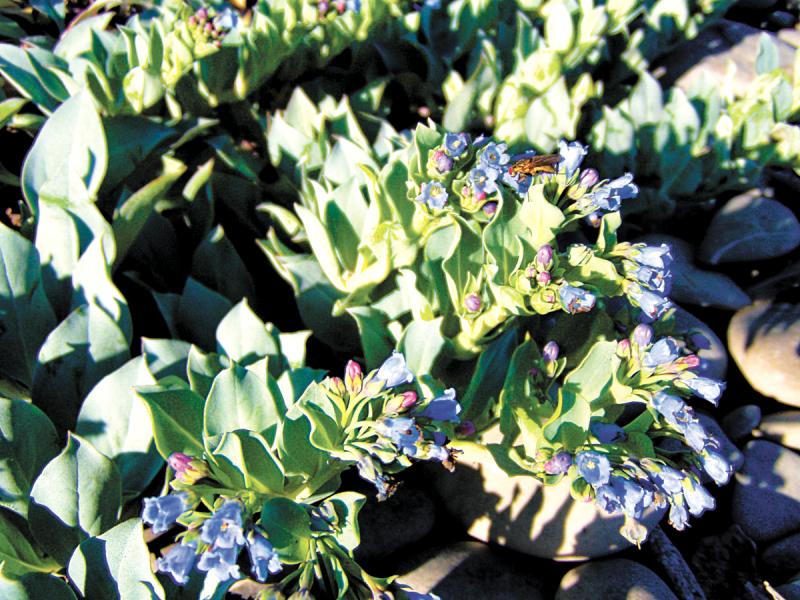Oyster plants are rich-tasting, high-protein and delicious, and often thought to be an aphrodisiac. That is interesting in light of the fact that oysters often change their sex during their lives, starting out as males and ending as females. Because of their very high calcium content, oyster shells help your garden flourish. Calcium improves the soil’s pH balance and helps strengthen plant cell walls. Calcium is great to treat blossom end rot, and it can improve the taste of tomatoes.
You can go one better than adding oyster shells to your garden and grow your own oysters! OK, not real oysters, but a plant with fleshy leaves that do indeed taste like seafood. Oyster plant (Mertensia maritima) is a member of the borage family, and like most herbs, it grows best in rocky, sandy soil that drains well. It is hardy, and tolerates sea spray and salt mists. The blue-green leaves grow out of a modest rosette of leaves. The perennial trailing plant grows close to the ground, forming 15-inch mounds. Oyster plant is perfect for planting in rock gardens because it grows well in rocky soil.
The thick, tender leaves really do taste like oysters and even have a hint of seaweed flavor. Use the leaves in salads, with dips, or steamed and served with butter.
Sowing oyster plant from seed is easy, although the seeds often take up to a month to germinate.
To break the natural dormancy of the seeds, keep them refrigerated for several weeks before planting them. Seeds are available from specialty nurseries such as Baker Creek (www.rareseeds.com). Because oyster plants do not like being transplanted, if you start them indoors, be sure to plant the seeds in jiffy pots so you can plant pot and all, and avoid transplant shock.
Set the young plants in light shade out of hot sunlight. Keep them well watered and never let the soil dry out.
Once your plants are fully grown, cut the stems back to half length to strengthen the plant. You are growing oyster plant for the leaves, not the flowers, so remove all flower buds, because they can sap much of the plant’s energy.
Leaves cut in the morning are more fragrant and tastier than leaves cut later in the day. Only pick half of the leaves, so the plant will be able to regrow.
Oyster plant does well in pots. An advantage to growing in pots is that you can set the pots on pebbles in trays of water, and not only get higher humidity to the leaves, but prevent snails from attacking.
Always use a fast-draining soil such as cactus potting mix, or add sand to your regular potting soil. Mulching, especially in summer, keeps the ground cool and retains moisture.
Use your raw oyster leaf in salads or as a garnish for seafood, especially scallops and shrimp. Float oyster plant leaves atop lobster bisque.
You can surprise your guests with a bed of oyster leaves topped with wild mushrooms such as Hypomyces lactifluorum, the so-called lobster mushroom. You will then have faux lobster atop faux oysters and never touch seafood.
And, aw shucks, no shells to shuck.



















































